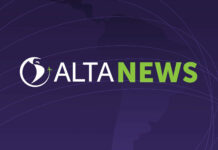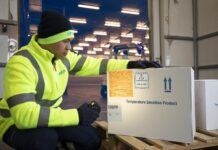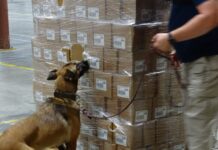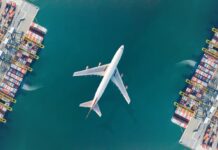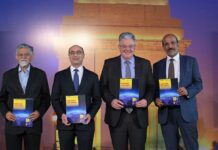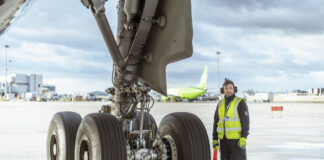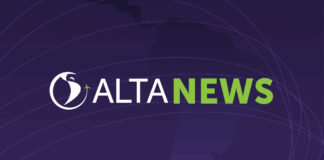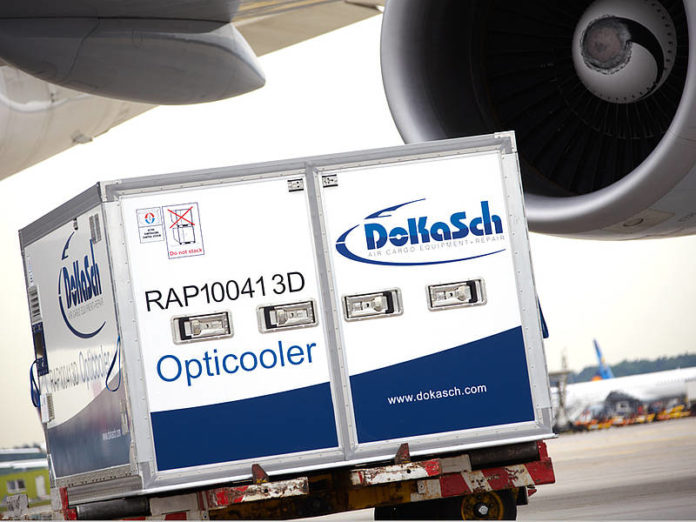

The ULD (Unit Load Device) market is projected to grow to $2.02 billion by 2021, enjoying around four per cent per annum growth in the five years since 2016, according to Dublin-based Markets and Research.
It says this market is mainly driven by factors such as increase in demand for lightweight ULDs, growth in international trade and increase in demand for cold containers. However, factors, such as high repairing cost of unit load devices are expected to restrain the growth of this market.
Rising aircraft orders will significantly contribute to the increasing demand for unit load devices.
The North American region is estimated to account for the largest market share; Asia-Pacific to grow at the highest CAGR during the forecast period.
Major companies manufacture UKDs, including Nordisk Aviation Products AS (Norway), Zodiac Aerospace (France), VRR Aviation (The Netherlands), DoKaSch GmbH (Germany) and Satco (US).
The humble Unit Load Device (ULD) is no more. Thanks to the development of the Internet of Things (IoT), modern ULDs are now able to track their whereabouts and condition autonomously. They pass this information on to humans or computers which can see it. The ULD that is being tracked is what generates the transactional supply chain information.
This modern IT suggests ULD manufacturing is a young industry. However Palnet managing director Klaus Demtröder notes that some of the industry’s key players go back to the start of wide-body passenger aircraft.
He says: “I have been in this business since 1975, for 43 years. My company was established in 2001. Others such as Nordisk, Satco and Zodiac (formerly Driessen and AluSingen) were established as the first wide bodies came on the market in the late ‘60s and early ‘70s.
“DoKaSch was established in 1989. I think Fylin from Taiwan in early 2000. Satco could be the oldest. There is a chance for new manufacturers but very limited. It is financially risky as machinery and material cost a lot of money.”
Composite materials
Over recent years manufacturers have switched from aluminium construction to composite materials for ULDs. Pallet manufacture, however, are a “different matter”, says Demtröder.
“The containers can be improved as they have been dramatically with the change from aluminium to composite materials. Pallets are a different story. Today’s state of the art is already 40 years old. The size makes it difficult to change from aluminium to another material.”
His company is highly automated as Western Europe has high labour costs. His opinion is that manufacturers in places such as China and Bangkok, with much cheaper available workforces, are less automated.
When asked by Air Cargo Week how influential airlines are in the design process or whether manufacturers go it alone and airlines simply have to buy what is made, Demtröder has a surprising answer.
He says: “I do not believe that the airlines are very influential. The design process is mainly undertaken by manufacturers but this does not mean there are no ideas are coming from airlines.
“All in all the manufacturers are the driving forces. This can be substantiated in the technical meetings such as SAE, ISO and IATA.”
Considering the current state of the ULD manufacturing sector, Demtröder says: “Current manufacturers have a lot of knowledge and expertise and a long relationship with the aviation industry. I believe most of the mentioned companies will stay for another long period. Only people change from time to time.”
Pooling resources
An informal network of ULD owners and operators three years in the planning became operational in April 2015 to allow for the management of global ULD over and under stocks at member stations.
The brainchild of Willem Jan Loomans, a container control manger for KLM, Skypooling seeks to iron out the situations where imbalances of ULD stocking can lead to a surplus or need for ULDs.
He says: “About five years ago, I started to contact other airlines’ ULD control department for assistance or to give assistance if they were highly overstocked with AKE ULDs at Amsterdam airport. So with the approval of KLM, I started to build this network privately in my own time.
“Skypooling.net is a web-based tool for management of global ULD over and under stocks at member stations. Currently around 90 airlines and ULD companies from all over the world are in this global network as active members, ULD contactors, ULD manufactures, ULD service providers such as leasing companies as sponsors.”
Focusing on the airlines’ ambitions to help each other reduce ULD, mostly AKE units, over and under stock levels, Loomans says: “It is not logical to send overstock from station A to the home base and then forward empty ones to station B, while another carrier could forward overstock directly from station A to station B.
Sending empty ULD stock from/to home base means less cargo revenues and/or extra fuel/CO2 costs.
“This all on voluntary base, no costs, no contract involved and all lift-ups are on courtesy base. The more airlines in the pool, the more benefits for all. It’s simple as that.”

